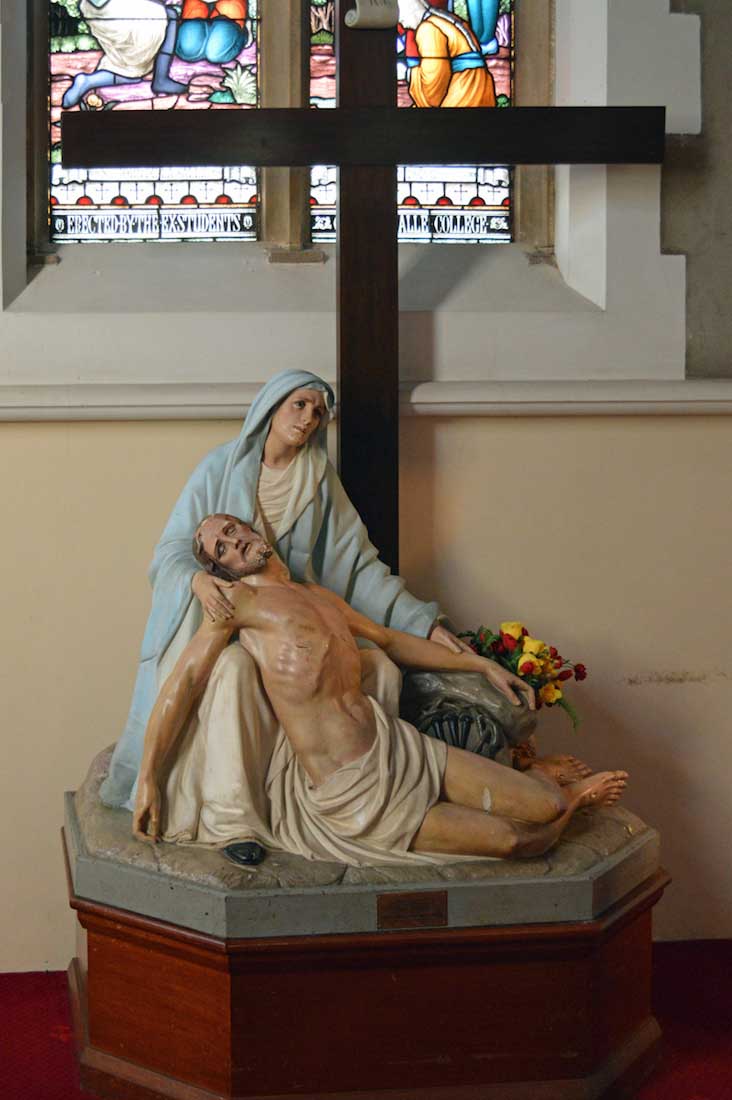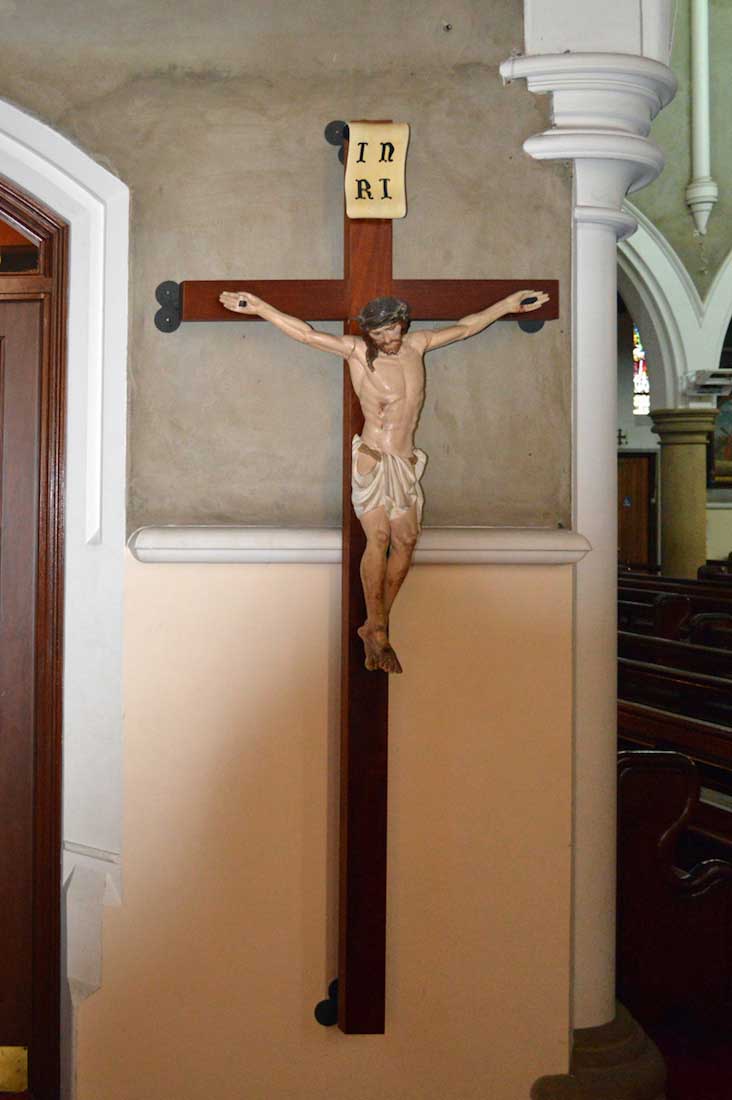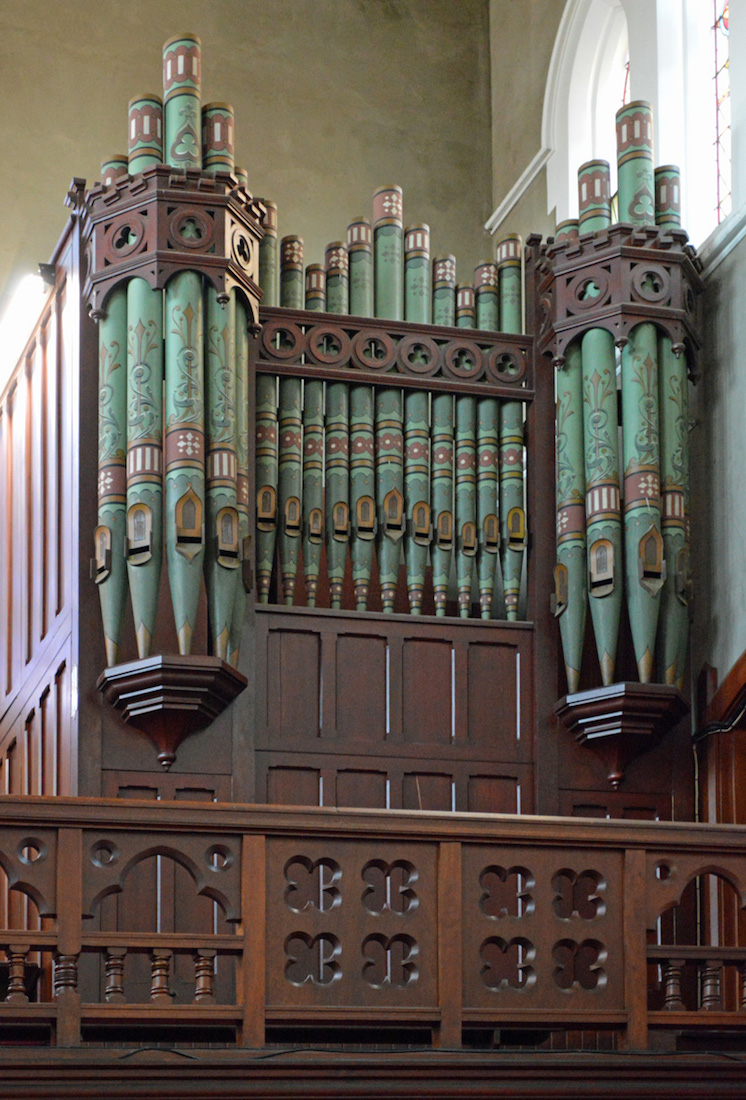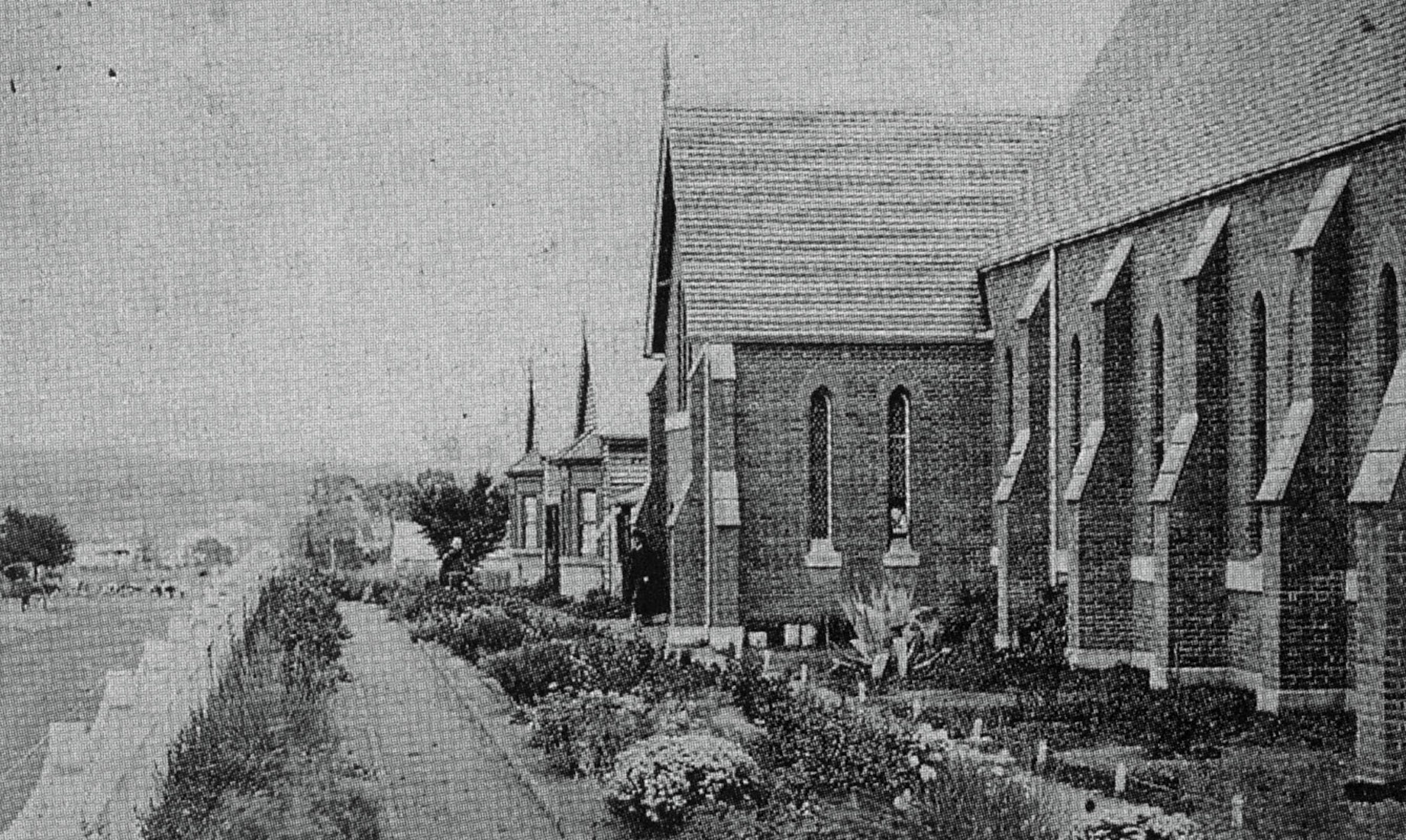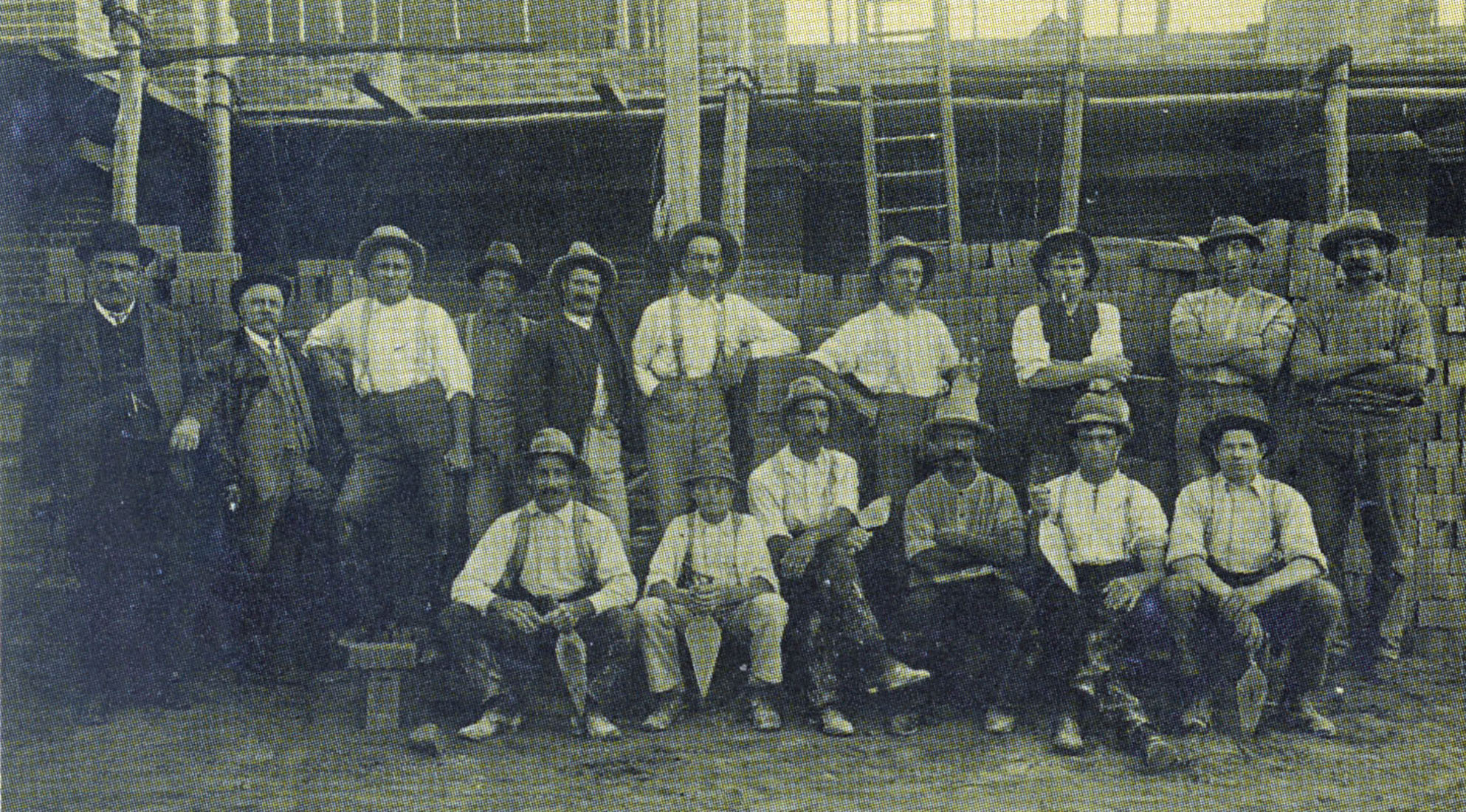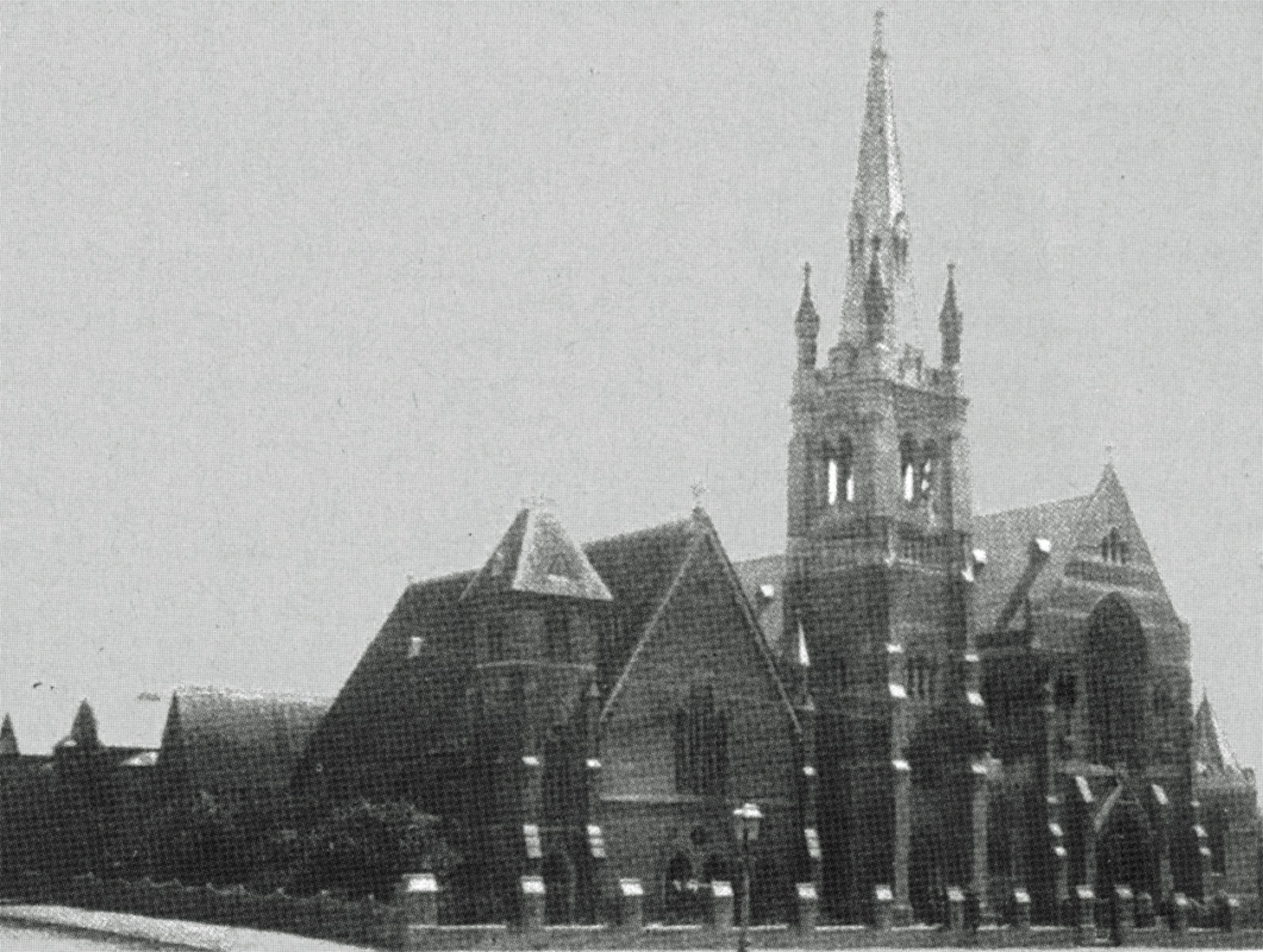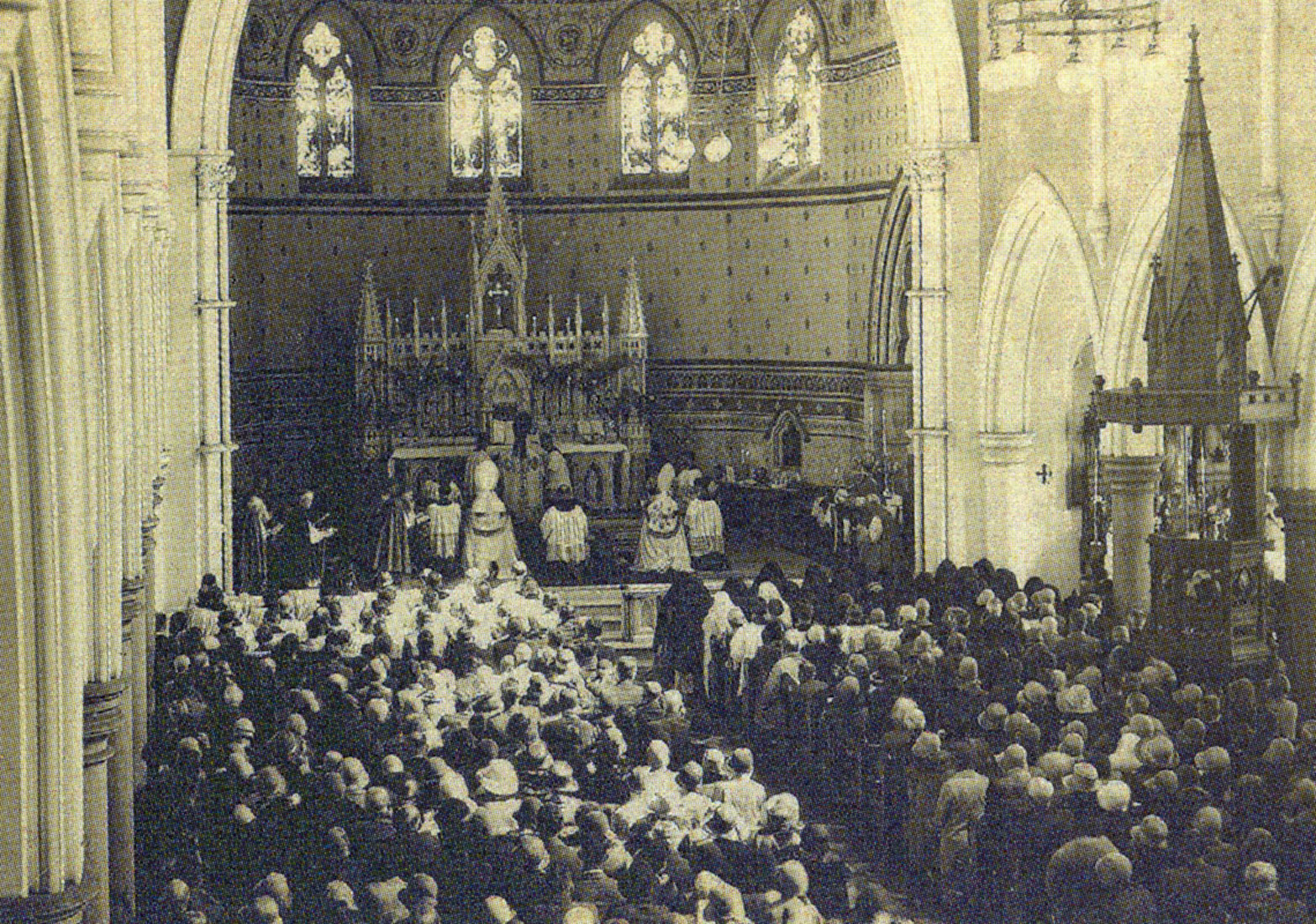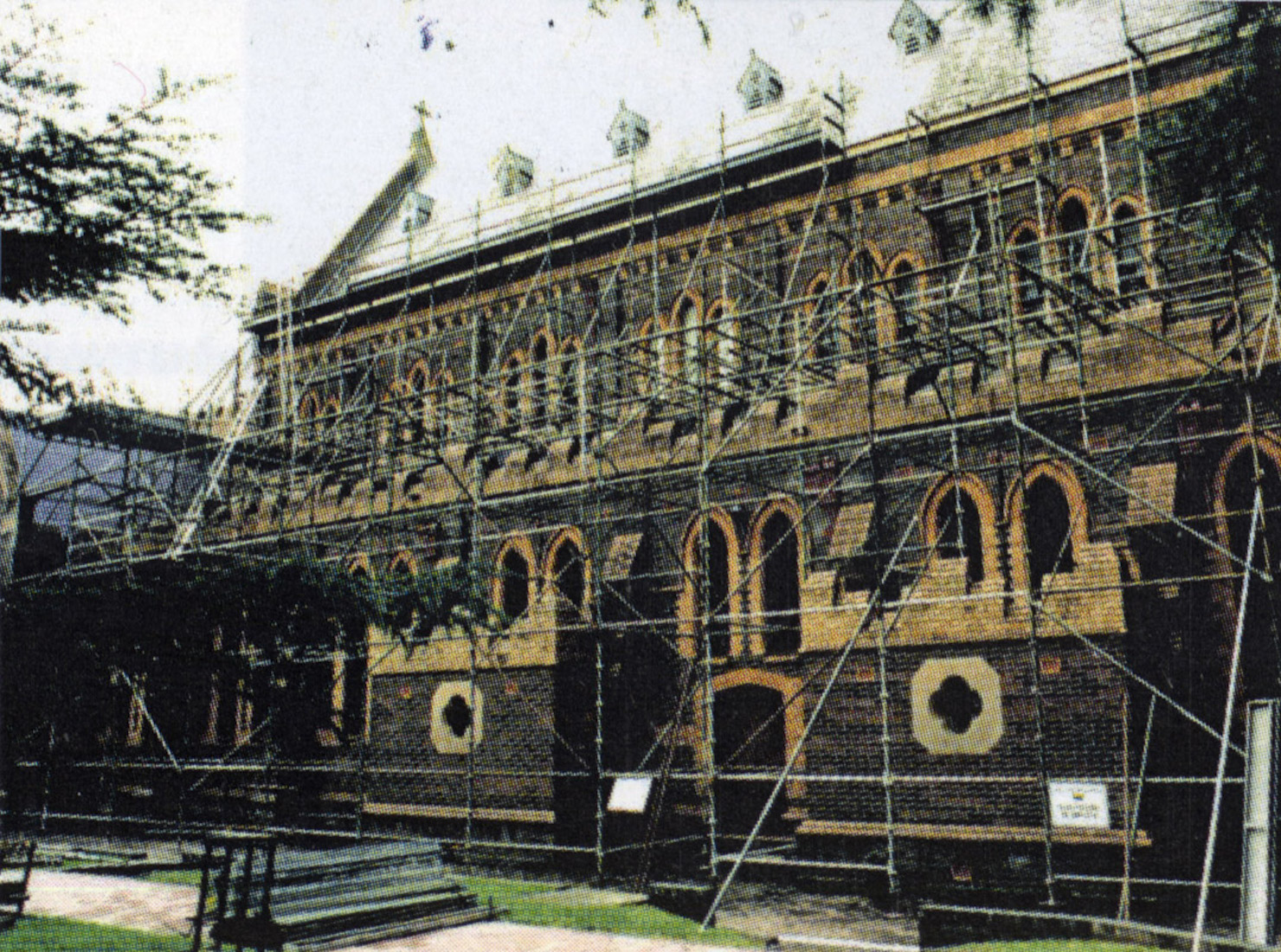
The baptistry reminds us that baptism is our sacramental entrance to our faith life. The font is topped by elegant brass decorations. Marble arches and motifs reflect the decoration of the high altar. PLAN
62. BAPTISTRY WEST WINDOW
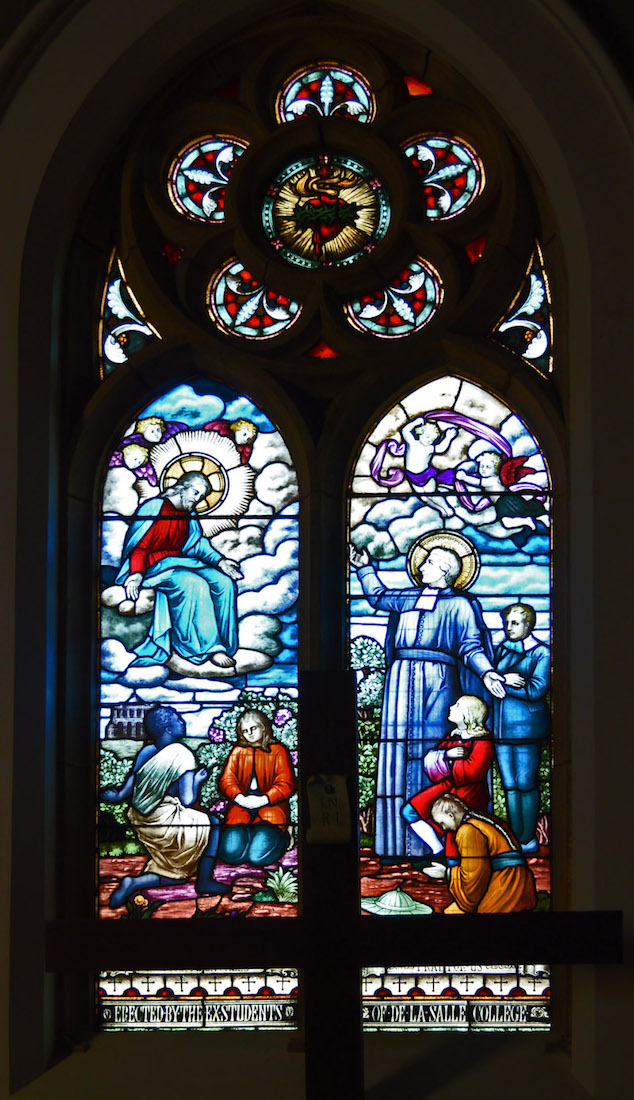
The window on the West wall of the baptistry depicts St John de la Salle who lived 1651 – 1719. He was ordained a priest in 1678, but became very interested in education, opening four schools. His primary concern was to train the teachers he recruited, and in 1684 La Salle and 12 of the schoolmasters bound themselves by a vow of obedience, and decided on the name ‘Brothers of the Christian Schools’. He has been declared the Patron of all teachers.
63. PIÈTA
Below the West wall window in the baptistry is a traditional Pieta (literally, ‘Pity’) statue of Mary with the body of her dead son, Jesus Christ, across her lap. Michelangelo’s famous Pieta is a powerful traditional Catholic icon. The original is in St Peter’s Basilica, Rome.
64. CRUCIFIX
Facing the Baptistry from the North is this Crucifix – a fitting baptismal symbol of dying to self and rising to new life.
65. ORGAN
As we complete our tour of the interior of this Cathedral, we stand back in the nave and look up at the West gallery. To the right is the pipe organ. This was made by George Fincham and Sons of Melbourne. The original mechanical model was water-cooled with an outlet in Dangar Street. It was converted to an electro-pneumatic action and upgraded to tracker action in 1985.
66. WEST WINDOW
The West wall is dominated by the great Western window. This was erected by Bishop O’Connor in memory of his predecessor Bishop Elzear Torreggiani DD, Second Bishop of Armidale. The quatrefoil windows at the top depict Christ at centre surrounded by the Four Evangelists and the symbols IHS and Alpha and Omega. In the top of the lancet panels we see from left to right St John the Baptist, St Peter, St Paul, and St John. Below are four Irish Saints, reflecting how Irish Catholicism was brought to Australia, and Armidale in particular.
67. FIRST CHURCH
Dean James Hanly was the first priest to visit the Armidale area in 1848. Having travelled from Sydney to Brisbane by boat, he was called to attend a Synod in Sydney, and rode on horseback through the Armidale area en route to that meeting. He ministered to the people along the way. The first Catholic church in Armidale was built in 1848 on the site of O’Connor Catholic College’s main front entrance – some distance from the present Cathedral site.
68. FIRST CATHEDRAAL
The Diocese of Armidale was constituted in 1862 covering an area of 120,000 sq. km. The first Bishop, Timothy O’Mahoney was installed in 1869. The first Cathedral, St Mary's, was erected on land donated by Joseph Daly at the corner of Dangar and Barney Streets and opened on Friday, 2 February 1872, feast of The Purification. This cathedral stood on the site until completion and opening of the new Sts Mary and Joseph's Cathedral, alongside it in October 1912. The 1905 photograph shows this original Cathedral with the Bishop’s House behind.
69. NEW CATHEDRAL
The new Cathedral was built in 1911 – 1912. Bishop O'Connor, worked with the builder, Mr George Nott, to extend the length of Sts Mary and Joseph's Cathedral beyond the original plans drawn by John Hennessey of Sydney. The enlarged cathedral of Sts Mary and Joseph, costing £28,000 ($56,000) was opened free of debt on 6 October, 1912. The cost of the magnificent stained glass windows was £2,200 ($4,400). At least three artisans were engaged in construction of the original windows - sadly they, their talents, or their origins are not identified in records available to the author. The photo shows some of the builders hard at work!
70. TWO CATHEDRALS
This old photograph dating from around 1912 shows the two Cathedrals standing side by side. Shortly after this the old cathedral was demolished, and its materials used in the construction of a new school. Photo Credits: The historical photographs on this site have been scanned from the Cathedral Commemorative Calendar : Sesqui-centenary of the Armidale Parish 1853 – 2003.
71. BISHOPS
Life in a Cathedral involves people as well as bricks and mortar. The Bishops of Armidale over the years have been: I T O’Mahoney 1871 – 1877; II E Torreggiani 1879 – 1907; III Patrick Joseph O’Connor 1904 – 1932; IV John Aloysius Coleman 1932 – 1947; V Edward John Doody 1948 – 1968; VI James Darcy Freeman 1968 – 1971; VII Henry Joseph Kennedy 1972 – 1991; VIII Kevin Michael Manning 1991 – 1997; IX Luc Matthys 1999 – 2012; X Michael Kennedy 2012 – Present. The photograph shows the consecration of Dr Coleman as Bishop in 1929.
72. MAINTENANCE
Every Cathedral undergoes alteration from time to time, and there is a constant problem of maintenance. We can but pray that this grand SS Joseph and Mary’s Cathedral will continue to be an Armidale landmark – but more – a centre of worship and ministry for God’s people, and to His glory. This completes our tour of the Cathedral.
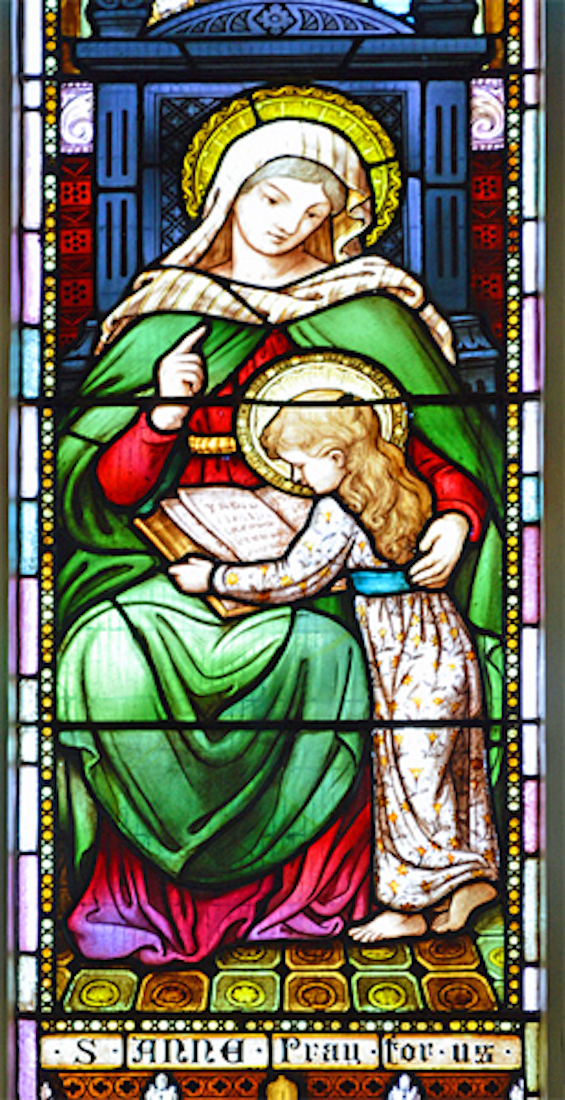
CONCLUSION
I hope you have enjoyed visiting the Cathedral of St Mary and St Joseph with me. I really enjoyed our visit here, and the correspondence which followed!
I am happy to receive constructive comments or corrections concerning this website. The best websites are the ones which have no errors! I am grateful to my wife Margie who came with me, and who has proof-read these pages.
This Diocese of the Riverina has an interesting website, and some of the textual information about the Cathedral on my site has come from there. I am happy to acknowledge this source. The link for the Cathedral website is:
The photographs which appear on this site can also be found in higher resolution at:
https://www.flickr.com/photos/paulscottinfo/sets/
This revised version of the site changes only the presentation, in order to make the site compatible with mobile phone technology.
Site created 10/ 2014 ; modified 01 / 2016 ; reformatted 07 / 2020.
Paul Scott

